Cherry blossoms gifted from Japan aren’t the only link to Asia in Washington DC. From the famed tidal basin head northeast and you’ll eventually reach a glorious spot nuzzled into an otherwise urban New York Avenue – the U.S. National Arboretum. Yes, there is a National Arboretum. And one of its greatest treasures is the National Bonsai and Penjing Museum.
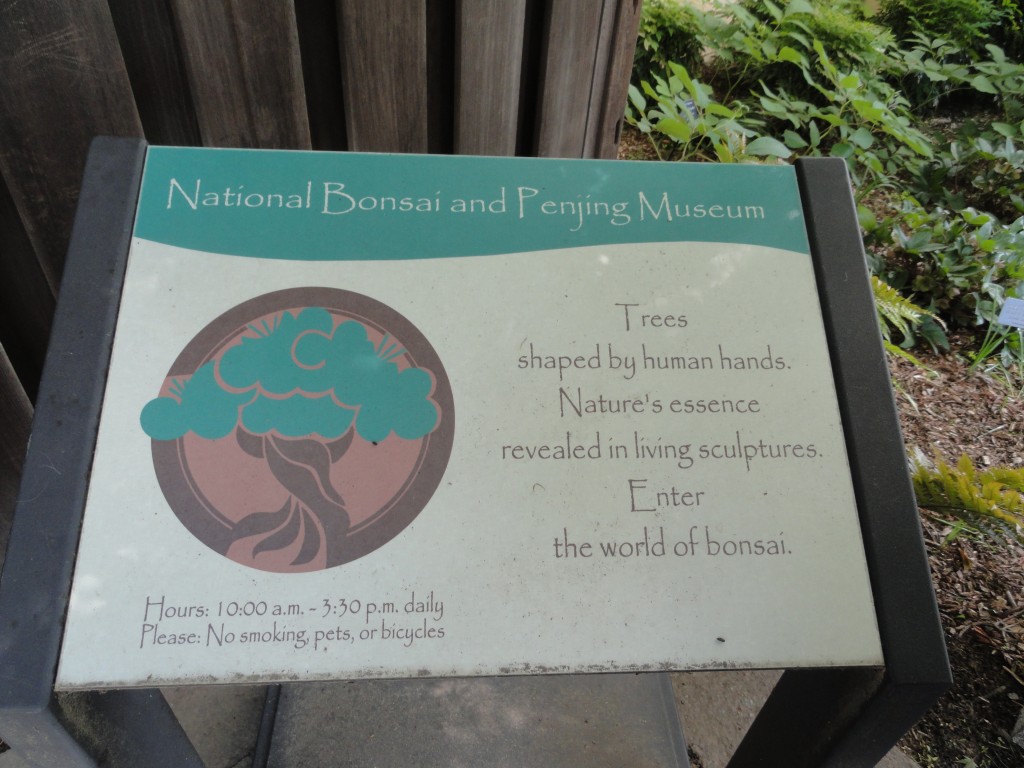
An offshoot of the US Department of Agriculture (which, incidentally, was started by Abraham Lincoln in 1862), the Arboretum features living exhibits spanning the familiar dogwoods and azaleas to the practical herb gardens to the more exotic Asian collection. They even have 22 sandstone Corinthian columns that once stood at the east portico of the U.S. Capitol. But by far the most captivating are the bonsai trees and penjing art.
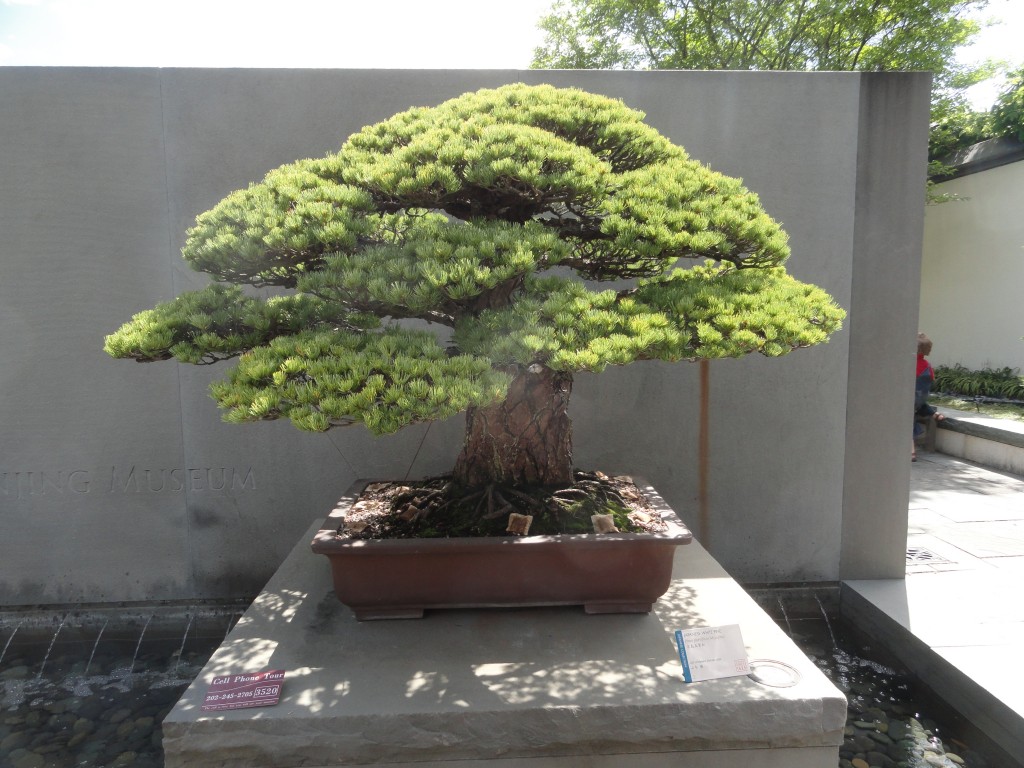
Bonsai is the Japanese art of sculpture using living trees. Each tree is painstakingly managed over many decades and even centuries to limit its size and sculpt its shape. The oldest tree in the museum is the Japanese White Pine in the photo above. It has been in training since 1625, which means that many generations have dedicated thousands of hours to this one tree. How do they sculpt the tree? I’ll talk more about the science of bonsai in a future post. Suffice to say it takes a lot of patience.
Many of the trees in the collection are White, Black, or Japanese Pine, or Junipers. These evergreen conifers lend themselves to being handled and managed. Some of the most beautiful are this California Juniper:
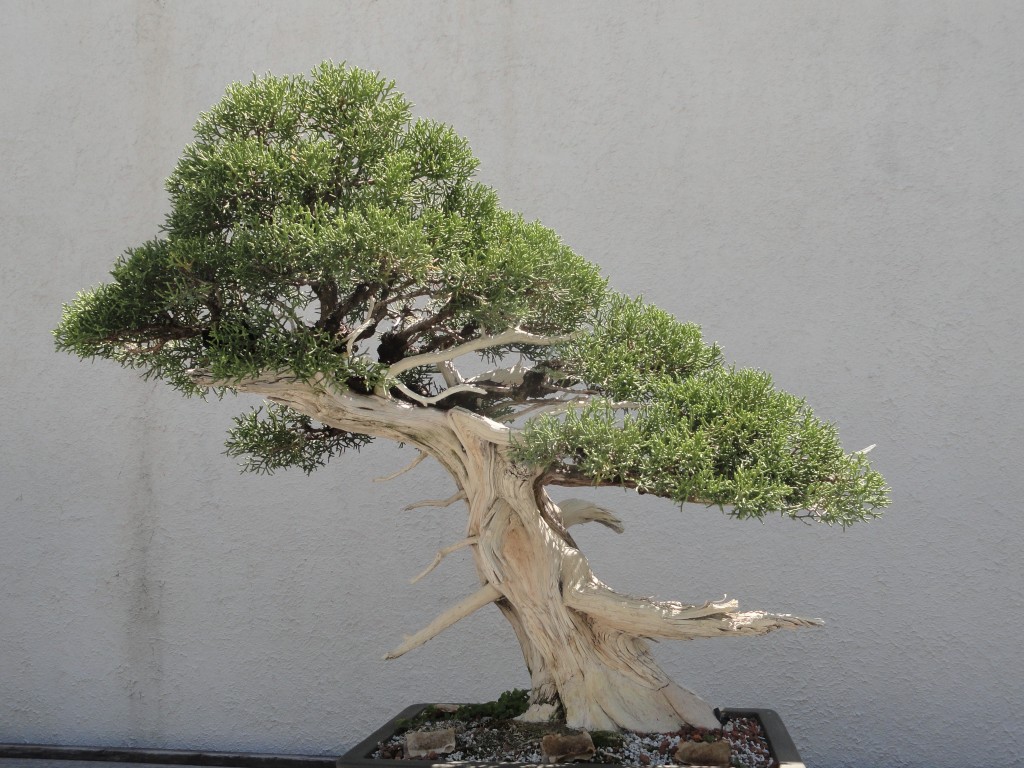
And this Chinese Juniper:
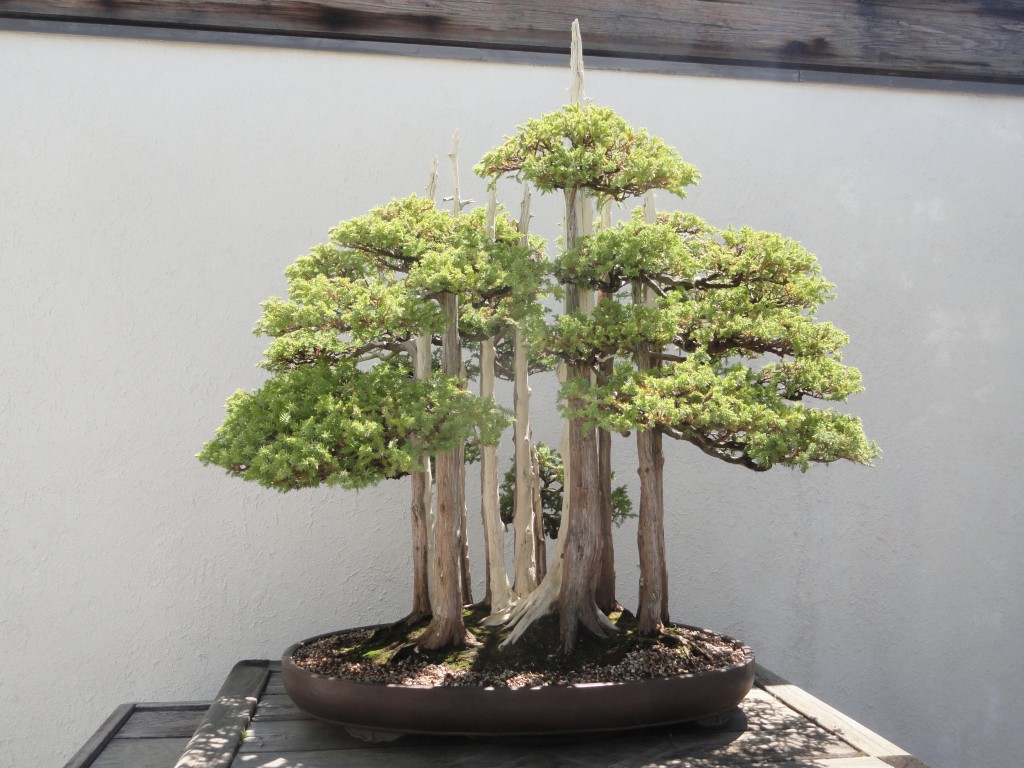
But non-evergreens can also created, like this Japanese Maple:
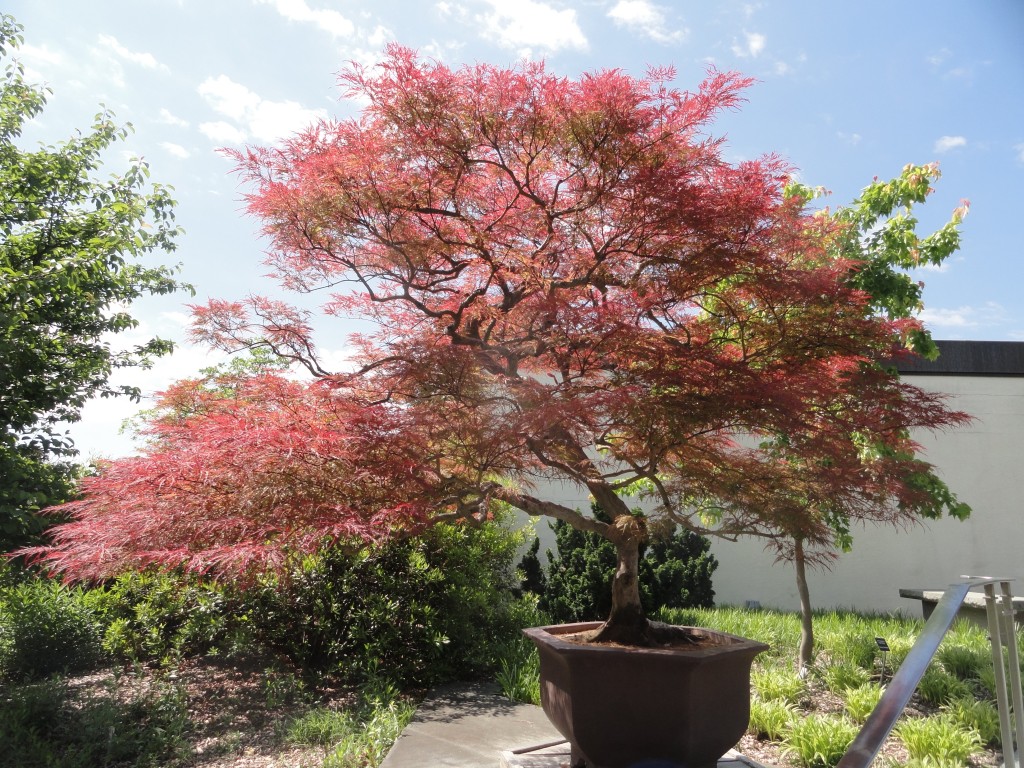
Even trees that we know for their extraordinary size can be kept small by a dedicated bonsai artist. Take, for example, this Coastal Redwood tree:
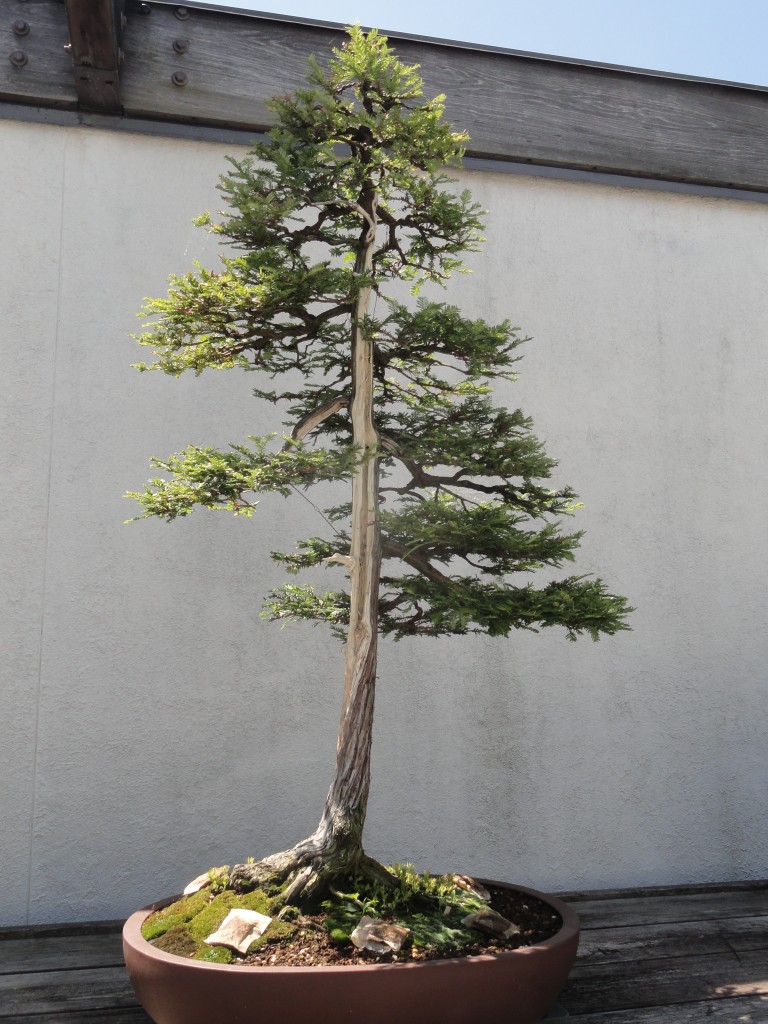
All of the above would be considered Japanese bonsai. The museum also has a several examples of the Chinese art of penjing. Like bonsai, penjing uses carefully managed miniature trees. But penjing places these trees in the context of a miniature landscape.
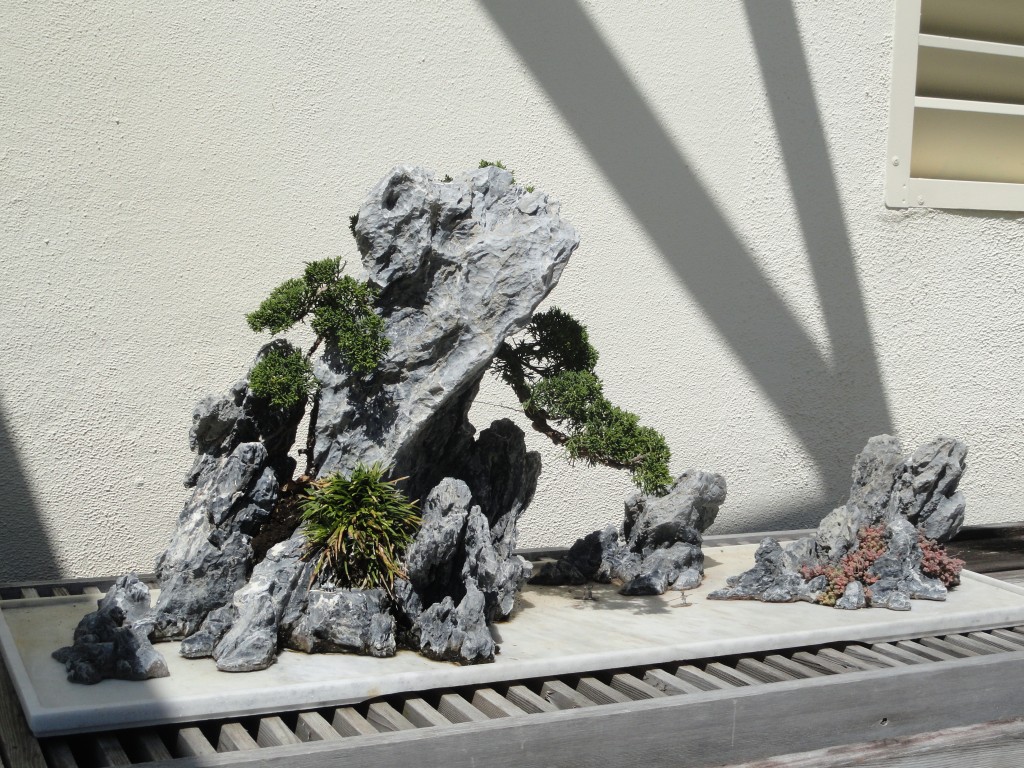
Roots may be “draped dramatically” over rocks. Rocks may also become the focal point of the work, with the trees acting as highlights. In some cases miniature ceramic figures are included to create a “natural” scene on a tiny scale. The effect can indeed be dramatic.
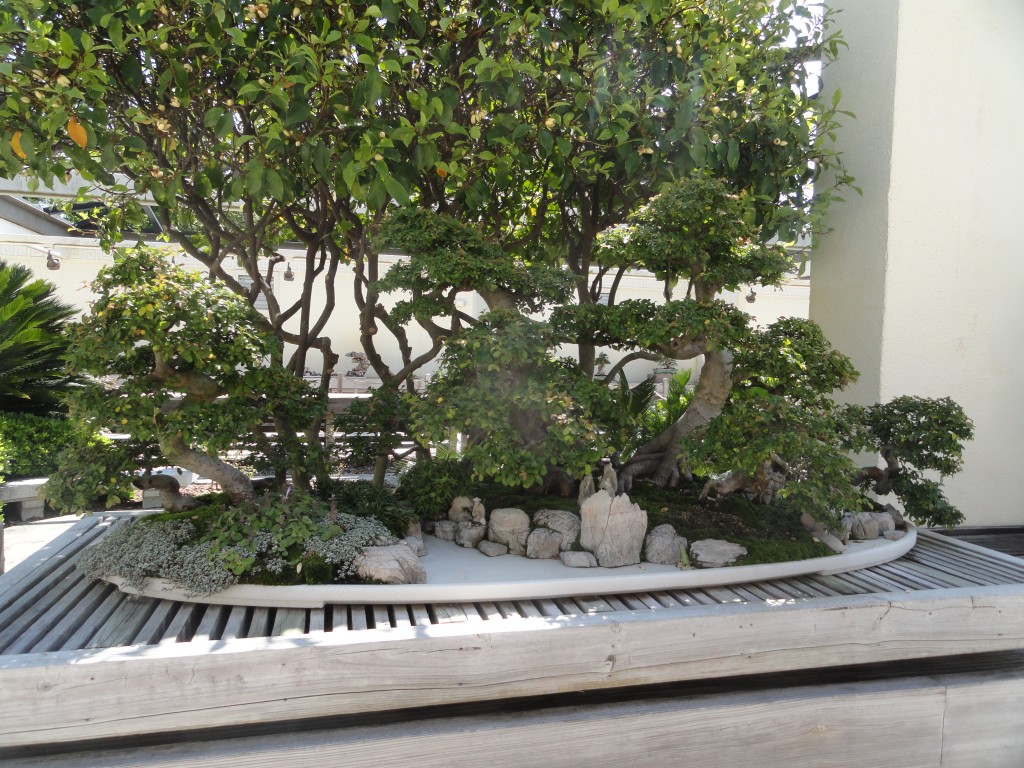
I’ll end this post here but plan to come back for more insights into the fine art of bonsai and penjing. Getting these small trees into the preferred shape (including dragons!) takes some significant, some might even argue tortuous, mechanical manipulation. The public rarely sees the science behind the art. I’ll show it to you.
Meanwhile, check out my Goodreads author page. While you’re at it, “Like” my Facebook author page for more updates!
David J. Kent is the author of Lincoln: The Man Who Saved America, scheduled for release in summer 2017. His previous books include Tesla: The Wizard of Electricity and Edison: The Inventor of the Modern World (both Fall River Press). He has also written two e-books: Nikola Tesla: Renewable Energy Ahead of Its Time and Abraham Lincoln and Nikola Tesla: Connected by Fate.
Follow me by subscribing by email on the home page. And feel free to “Like” my Facebook author’s page and connect on LinkedIn. Share with your friends using the buttons below.











Wonderful post! These beautiful little trees/landscape remind me of my grandpa, who spent lots of time on similar things. Too bad we didn’t have cameras back then. 🙁
Looking forward to future articles on this topic.
It would have been wonderful to watch your grandfather work. Perhaps an idea for something to write about. 🙂
Pingback: The Art and Science of Bonsai | Science Traveler
this article fits nicely with my ‘blossom’ themed poem:
https://slideaways.wordpress.com/2017/06/17/in-meditation/
I’m glad you liked it.
Wow, that brings me back and makes me jealous. I spent most of my gradeschool, just starting junio high years in Maryland and my father’s favorite place to take people was a weekend trip to the Smithsonian. He favored the Air and Space Museum, but, before we went to whatever museum we were going to, we’d always stop at the Arboretum. I remember the collection of orchids in particular including the fact that my father didn’t realize that there were scented varieties of orchid before we found them here.
I do not recall a bonsai and penjing exhibit and wonder if that was built after I last came there, which shouldn’t be surprising. I was last there in 1979? 1980? I long time ago.
And I love bonsai.
I don’t know when the exhibit was built, but it looks fairly permanent at this point. The arboretum is a wonderful oasis in an otherwise high-tension city.